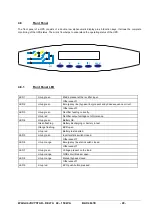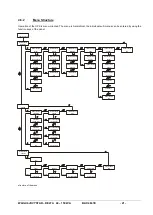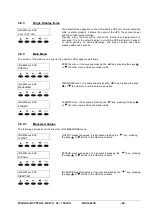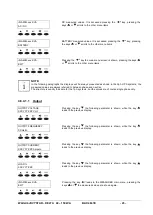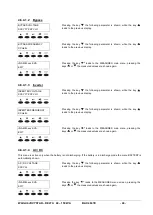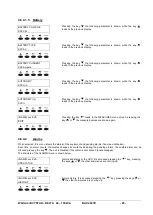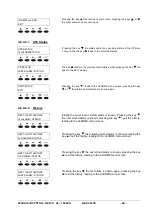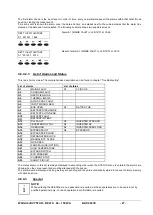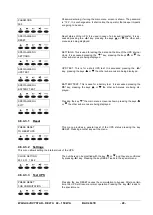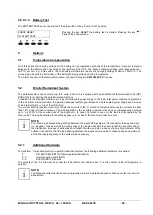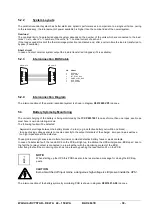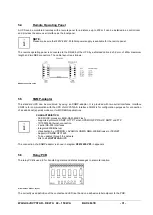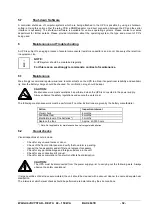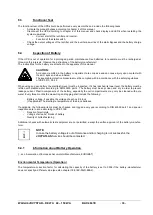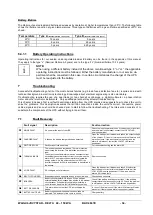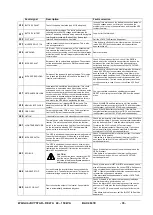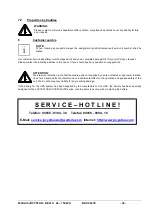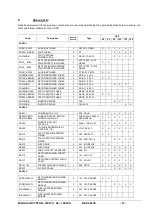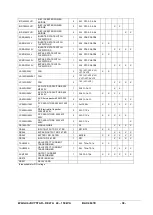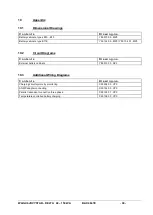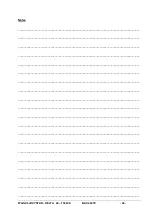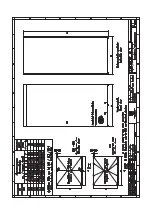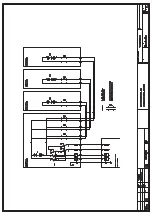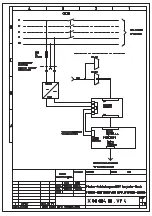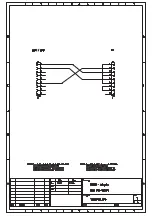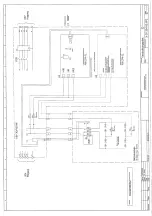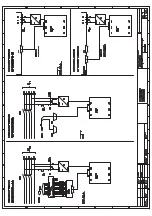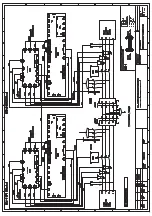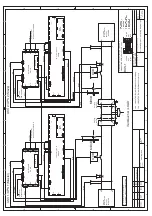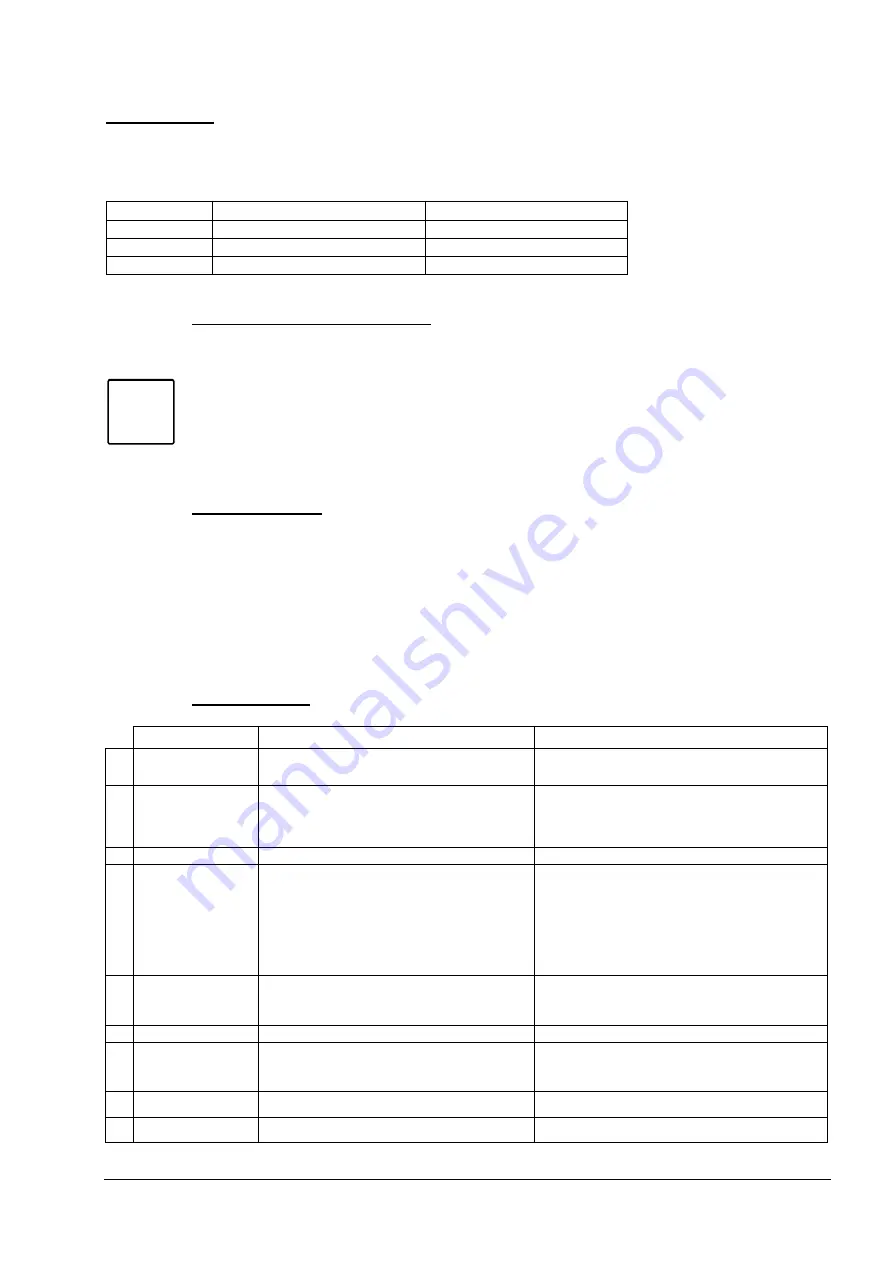
Wärtsilä JOVYSTAR
– DELTA 40 – 150kVA BAX 4647E - 34 -
Battery lifetime
The lifetime of sealed lead-acid batteries decreases by operation at higher temperatures than +20°C. The following table
shows the lifetime reduction at given temperatures. Three types of batteries with a given lifetime specified at +20°C are
shown:
Temperature
Type A
(Nominal lifetime 10-12 years)
Type B
(Nominal lifetime 6-9 years)
20°C
12 years
9 years
30°C
6 years
4,5 years
40°C
3 years
2,25 years
6.4.1.1
Battery Operating Instructions
Operating instructions for our sealed, valve-regulated lead-acid battery can be found in the appendix of this manual.
They appl
y to the type “J” (Nominal lifetime 6-9 years) and to the type “JL” (Nominal lifetime 10-12 years).
i
NOTE:
When using a different battery instead of the above mentioned type “J” or “JL”, the applicable
operating instructions must be followed. Either the battery manufacturer or our service de-
partment shall be consulted in this case. In certain circumstances the charger of the UPS
must be readjusted to the battery.
7
Troubleshooting
Successful troubleshooting of all but the most obvious failures (e.g. blown fuses, defective fan, etc.) requires an in-depth
technical background in electronics technology. Knowledge about electrical engineering is also mandatory.
Troubleshooting requires the use of a dual trade (or two channel) oscilloscope, a digital multimeter, a phase rotation
meter and other electronic instruments. Only qualified personnel may attempt troubleshooting.
This chapter includes a first level fault description starting from the UPS alarms and suggests how to check the unit to
solve the problems. This description assumes that all the connections inside the unit are correct. Connectors, power
cables, signals and so on should be checked prior to start to follow the troubleshooting. The intervention consists of to
substitute the components of the UPS without trying to repair them.
7.1
Fault Recovery
Fault signal
Description
Fault correction
A1
MAINS FAULT
No power at the input of the UPS
Check the input power and fuses. If the above point is correct
and the alarm is still present, contact the JOVYATLAS-
service department.
A2
CHARGER FAULT
A fault on the battery charger has been detected.
Open the battery circuit breaker and check the output voltage
of the charger. If it is out of tolerance check the thyristors and
protection fuses. If the above points are correct and the
alarm is still present, contact the JOVYATLAS-service
department.
A3
RECTIFIER FUSE
Rectifier input fuse has blown.
For the troubleshooting see the alarm A2.
A4
THERMAL IMAGE
The inverter has been overloaded. Thermal protection
has stopped the inverter. This protection works as fol-
lows:
The output current ammeters measure an output current
exceeding the nominal output current (overload: see the
alarm A14). The microprocessor starts to calculate the
energy pulse I
2
t. As this pulse reaches the 100% the
inverter is stopped for 30min and the load is transferred to
the bypass.
Remove overload.
A5
AC/DC FAULT
DC voltage is out of tolerances.
Open the battery circuit breaker and check if the inverter
input voltage is correct within the tolerable limits (call the
JOVYATLAS-service department).
If it’s wrong see the
alarms A2 (charge fault).
A6
INPUT WRONG SEQ
Bypass input phase sequence (phase rotation) is wrong.
Check phase sequence.
A7
BCB OPEN
Battery circuit breaker BCB is open. When using an
external battery, this message also applies to the external
circuit breaker. When battery symmetry monitoring is
used, this also apply to a fault in the battery symmetry
Check if the battery auxiliary contact is ok. If the auxiliary
contact signal comes correctly to the I/S CL and the problem
is still present, call the JOVYATLAS-service department.
A8
BATT DISCHARGE
This alarm indicates that the UPS is discharging the
battery.
In case of this alarm check if the alarm A1 Mains fault is also
present or if there is some alarm coming from rectifier.
A9
BATTERY AUT END
Battery voltage has dropped below the voltage pro-
grammed. The autonomy time come to its end.
Charge battery.

